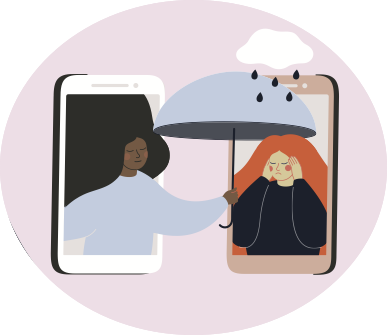How to Reduce the Mental Health Risk for Gender-Nonconforming Kids
In recent years, much of the country has become more accepting of those with sexual- and gender-nonconforming identities. Many in the LGBTQ community still face pressure, hostility and discrimination from a variety of sources, including their own families. As a result, these individuals, especially youth, are at a much higher risk of mental illness, substance abuse and risky behaviors.
According to the National Alliance on Mental Illness:
- LGBTQ youth are nearly three times more likely than others to experience a mental health condition, such as major depression or generalized anxiety disorder.
- For LGBTQ individuals ages 10 to 24, suicide is one of the leading causes of death.
- LGBTQ youth are four times more likely, and questioning youth are three times more likely, to attempt suicide or engage in self-harm compared to heterosexual youth.
- An estimated 20 to 30 percent of LGBTQ individuals abuse substances, compared to about 9 percent of the general population.
In a large national survey conducted by the National Center for Transgender Equality in 2015, 40 percent of respondents reported at least one suicide attempt during their lifetime. The vast majority of reported attempts – 92 percent – occurred before age 25.
“Transgender youth also face high rates of homelessness and physical violence,” says Dr. Natalia Ramos, an assistant clinical professor at the David Geffen School of Medicine at UCLA and a child, adolescent and adult psychiatrist at UCLA Health.
LGBTQ children often run away, explains Dr. Yolanda Graham, chief medical officer for Devereux Advanced Behavioral Health, a national nonprofit organization devoted to behavioral health care. As a result, “They are at higher risk for sexual exploitation,” says Graham, an expert in the treatment of sexually exploited children.
Parents can help their LGBTQ children build resilience and mitigate stress in many ways, Ramos says. “We know that expressing affection towards your child and acceptance of your child’s identity is very important. Parents can also encourage safe exploration of gender expression by providing access to age-appropriate toys, clothes, books and media.”
All adults should advocate for children who are mistreated because of their identity and limit exposure to intolerant individuals or environments. “Parents can also help children by connecting them to positive and affirming activities and groups. And seeking professional help for mental health symptoms or stressful events can help youth develop positive coping skills, explore identities and manage negative emotions,” Ramos explains.
Excerpted from “How to Reduce the Mental Health Risk for Gender-Nonconforming Kids” in U.S. News & World Report. Read the full article.
Source: U.S. News & World Report | How to Reduce the Mental Health Risk for Gender-Nonconforming Kids, https://health.usnews.com/health-care/patient-advice/articles/2018-07-20/how-to-reduce-the-mental-health-risk-for-gender-nonconforming-kids | Copyright 2018 © U.S. News & World Report L.P.
Do you need someone to talk to? CHC can help. We invite you to call or email our Care Coordinators at 650.688.3625 or careteam@testing.chconline.org to set up a free 30-minute consultation.





